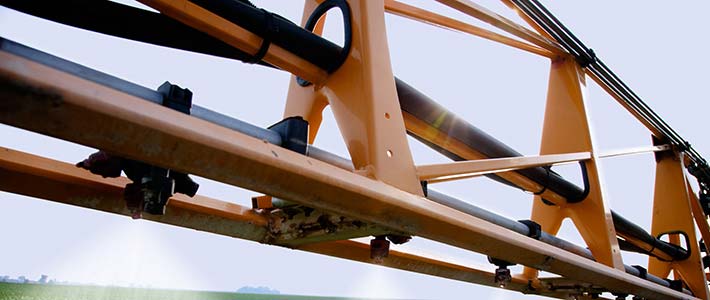The brown marmorated stink bug (BMSB) has only recently been detected in a few spots spread throughout Minnesota, mainly around urban areas, like Minneapolis. It has also been observed as far west as Moorhead and north to Duluth. This yield and quality bandit was recently detected for the first time in Minnesota soybeans in Dakota County on Aug. 17, 2016.
Across North America, this stink bug has been found in 42 states and two Canadian provinces (Ontario and Quebec). It is causing severe agriculture problems in nine states and nuisance problems in 16 others. One small overwintering population has been detected in Minnesota, but the insect is not yet considered to be established.
BMSB, an invasive insect native to Asia, affects many of Minnesota’s crops. It moves from different plant species to another as the fruit and seed begin to mature. With soybeans, BMSB feed on the bottom pods of the plant, at or around growth stage 6, delaying maturity and preventing the soybean plant from entering growth stage 7. This delay in maturation could severely impacting yield from short-season areas such as Minnesota.
Adults are about a half-inch long and shield-shaped insects with long pierce-sucking mouthparts held under the body between the legs. They often release an odor when disturbed. The name describes their appearance. The body is brown with a marble patterned, (marmorated) exterior. Legs and antenna alternate brown and white coloring along the length. Nymphs (young) are more colorful, with red and orange markings.
BMSB completes one generation per year in Minnesota and overwinters as adults in a hibernation-like state in woodlots, households, sheds and garages. Adults emerge in March and April, producing offspring in June. Females deposit eggs in clusters of about 25. Nymphs are present and active during the summer months. There are approximately five nymph stages. Adults feed on more than 300 different plant species until September or October, when populations typically peak, and then seek overwintering sites.
Typically, it takes an invasive insect about 5–10 years to go from a household nuisance to significant plant pest. We don’t know where BMSB overwinters in Minnesota; however, it is suspected the insect is currently hiding out in sheds and vehicles. In the central Atlantic states such as Pennsylvania, BMSB adults appear to overwinter in woodlots and under tree bark.
Given this information, I suggest scouting your equipment sheds and any small buildings, such as deer stands, at the transition zone between woods and your fields. If you find potential BMSB, please visit ‘Arrest the pest’ for instructions to report this beast.
The latest control information can be acquired from your local extension educator, Bob Koch (Koch0125@umn.edu) or your local agronomy consultant.
Additional Online Educational Resources:
http://www.mda.state.mn.us/plants/insects/stinkbug.aspx
http://www.dnr.state.mn.us/invasives/terrestrialanimals/brownmarmoratedstinkbug.html
http://www.extension.umn.edu/garden/insects/find/brown-marmorated-stink-bug/
https://www.epa.gov/safepestcontrol/brown-marmorated-stink-bug
David Kee is the director of research at Minnesota Soybean and can be reached at david@mnsoybean.com or 507-388-1635.







